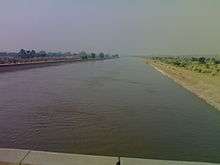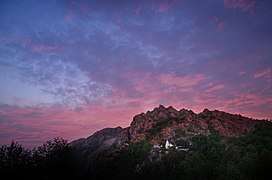Climate of Rajasthan


The Climate of Rajasthan in northwestern India is generally arid or semi-arid and features fairly hot temperatures over the year with extreme temperatures in both summer and winter.
History
Under the Köppen climate classification the greater part of Rajasthan falls under Hot Desert(BWh) and remaining portions of the state falls under Hot Semi Arid(BSh); the climate of the state ranges from arid to semi-arid. Rajasthan receives low and variable rainfalls and thereby is prone to droughts.
Seasons
Summer
Due to the Desert Geography, Temperatures frequently climb above 40 to 45 degree's Celsius in most places.
Due to its location Rajasthan has summers as the longest season.
In this time tourist activities are very low. The army reduces its patrol time.
Winter
The cold weather commences early in October and comes to an end in the middle of January.The climate in the cold weather is pleasant to very cold.
Monsoon
The state has two distinct periods of rainfall: rainfall due to the South-West Monsoon after summer and rainfall due to Western Disturbances .
Temperature
| — | Winter (Jan – Feb) |
Summer (Mar – May) |
Monsoon (Jun – Sep) |
Post-monsoon (Oct – Dec) |
Year-round | ||||||||
|---|---|---|---|---|---|---|---|---|---|---|---|---|---|
| City | Jan | Feb | Mar | Apr | May | Jun | Jul | Aug | Sep | Oct | Nov | Dec | Avg |
| Jaipur(Highest)[1] | 22.4 | 25.0 | 31.0 | 37.1 | 40.3 | 39.3 | 34.1 | 32.4 | 33.8 | 33.6 | 29.2 | 24.4 | 31.9 |
| Jaipur(Lowest)[1] | 08.4 | 10.8 | 16.0 | 21.8 | 25.9 | 27.4 | 25.8 | 24.7 | 23.2 | 19.4 | 13.8 | 9.2 | 18.8 |
| Udaipur | ... | - | - | - | - | - | - | - | - | - | - | - | - |
| Jaisalmer | ... | - | - | - | - | - | - | - | - | - | - | - | - |
Precipitation
| — | Winter (Jan – Feb) |
Summer (Mar – May) |
Monsoon 1 (Jun – Sep) |
Monsoon 2 (Oct – Dec) |
Year-round | ||||||||
|---|---|---|---|---|---|---|---|---|---|---|---|---|---|
| City | Jan | Feb | Mar | Apr | May | Jun | Jul | Aug | Sep | Oct | Nov | Dec | Total |
| Jaipur[1] | 7.0 | 10.6 | 3.1 | 4.9 | 17.9 | 63.4 | 223.3 | 205.9 | 66.3 | 25.0 | 3.9 | 4.2 | 637.4 |
| Udaipur | .. | ||||||||||||
| Jaisalmer | .. | ||||||||||||
Disasters
Drought and famine
Rajasthan receives low and variable rainfalls and thereby is prone to droughts.Availability of water is less due to absence of rivers and lakes.
Floods
Occasional floods in cities due to improper drainage occurs. Sometimes floods also occur in western Rajasthan due to impervious base rocks.
Pollution
In some industrial and urban centers pollution has been reported occasionally.
See also
References
- 1 2 3 "Jaipur Climatological Table Period: 1971–2000". India Meteorological Department. Archived from the original on April 2, 2015. Retrieved March 30, 2017.